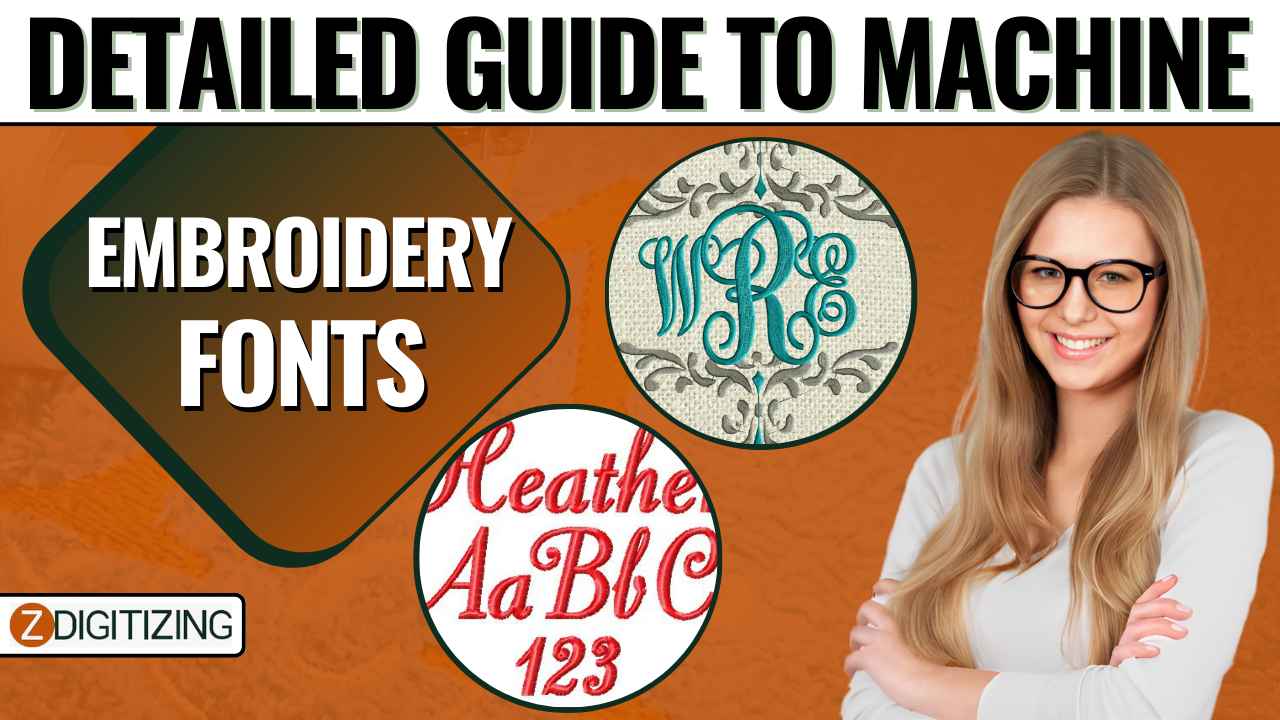
Detailed Guide to Machine Embroidery Fonts
Machine embroidery is a beautiful art that combines creativity and technology. One of the key elements in embroidery design is the use of fonts. Machine embroidery fonts, often referred to as embroidery lettering or monogramming fonts, allow you to add text to your embroidery projects. In this comprehensive guide, we will explore the world of machine embroidery fonts, from understanding the basics to selecting the right fonts and tips for a successful embroidery project.
Section 1: Introduction to Machine Embroidery Fonts
What Are Machine Embroidery Fonts?
Machine embroidery fonts are sets of pre-designed characters, letters, numbers, and symbols that can be stitched onto fabric using an digitizing for embroidery machine. These fonts come in various styles, sizes, and formats, allowing you to personalize and customize your embroidery projects with text. Fonts can add a special touch to items like clothing, linens, accessories, and more.
Section 2: Types of Machine Embroidery Fonts
There are several types of machine embroidery fonts, each with its unique style and purpose. Let’s explore the most common ones:
Type 1: TrueType Fonts
TrueType fonts are computer fonts that you can use with your embroidery software. You can find a wide variety of TrueType fonts, and they can be resized and customized to fit your design needs. Keep in mind that not all TrueType fonts are suitable for machine embroidery, so you’ll need to convert them or use specialized embroidery fonts.
Type 2: Built-In Fonts
Many embroidery machines come with built-in fonts that are specifically designed for machine embroidery. These fonts are digitized to work seamlessly with the machine, making them easy to use. They often include a variety of styles and sizes, allowing for dst embroidery file customization.
Type 3: Specialty Fonts
Specialty fonts are designed for specific purposes. For example, there are fonts created for monogramming, script fonts for elegant designs, and block fonts for a more straightforward and bold appearance. These fonts are tailored to meet specific design requirements.
Type 4: Custom Fonts
Custom fonts are created by professional digitizers or designers to cater to unique requests or branding needs. These fonts are not typically built into embroidery software but can be imported and used for personalized projects.
Type 5: Free Fonts
You can find a plethora of free embroidery fonts available online. These fonts vary in quality and style, so it’s essential to choose carefully. Free fonts can be a great resource for hobbyists and beginners looking to experiment without a financial commitment.
Section 3: Selecting the Right Machine Embroidery Fonts
Choosing the right embroidery font is a crucial decision in your project. Here are some factors to consider:
-
Project Type: Consider the nature of your project. Is it a formal occasion, a casual item, or a branding requirement? The font style should align with the project’s theme.
-
Readability: Ensure that the font you choose is easily readable, especially for text intended to convey a message. Complex or overly decorative fonts may hinder readability.
-
Size and Placement: Take into account the size of your design and where it will be placed. Some fonts are better suited for small, delicate embroidery, while others work well for larger, more prominent areas.
-
Font Style: Consider the personality of your font. Script fonts can convey elegance, while block fonts are more straightforward and bold. Choose a style that complements your project’s aesthetic.
-
Embroidery Machine Compatibility: Check that the font you select is compatible with your embroidery machine and software. Some fonts may require conversion or additional software to work with your specific equipment.
-
Digitization Quality: High-quality digitization is essential for embroidery fonts. Ensure that the font is digitized professionally to avoid issues like thread breaks or poor stitch quality.
Section 4: Tips for Successful Machine Embroidery with Fonts
Embroidering fonts can be both fun and challenging. Here are some tips to ensure your embroidery with fonts is successful:
-
Stabilize Your Fabric: Proper stabilization is crucial. Use the appropriate stabilizer for your fabric to prevent puckering and ensure smooth embroidery.
-
Hoop Properly: Hoop your fabric securely, ensuring it’s taut and aligned. Proper hooping helps maintain the correct tension for the embroidery.
-
Test Stitch: Always perform a test stitch on a similar fabric scrap before embroidering on your actual project. This allows you to check the thread tension and make any necessary adjustments.
-
Thread Quality: Use high-quality embroidery thread to ensure vibrant colors and durable results.
-
Machine Maintenance: Regularly clean and maintain your embroidery machine. A well-maintained machine produces better results.
-
Thread and Needle Compatibility: Ensure that the thread and needle you use are compatible with each other and the fabric. Thread breakage can occur if they are not well-matched.
Section 5: Conclusion
Machine embroidery fonts are an exciting element of embroidery design that adds a personal touch to your projects. From selecting the right font style to understanding the type of fonts and their compatibility, this guide equips you with the knowledge needed to embark on successful embroidery with fonts. Remember to choose fonts that align with your project’s theme, consider readability, and always test your design on scrap fabric. By mastering the art of selecting and using machine embroidery fonts, you can transform ordinary items into extraordinary works of art. Happy embroidering!



